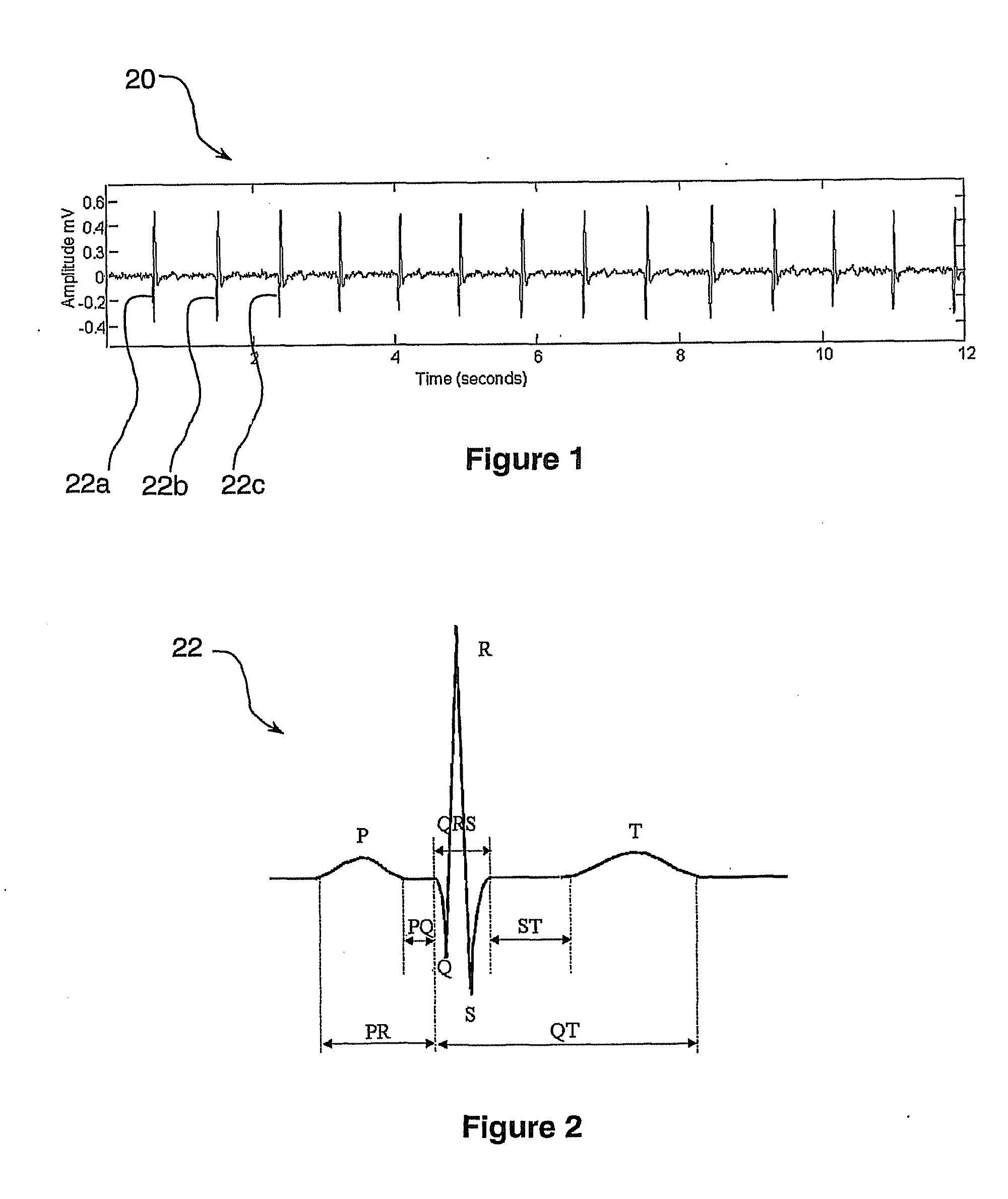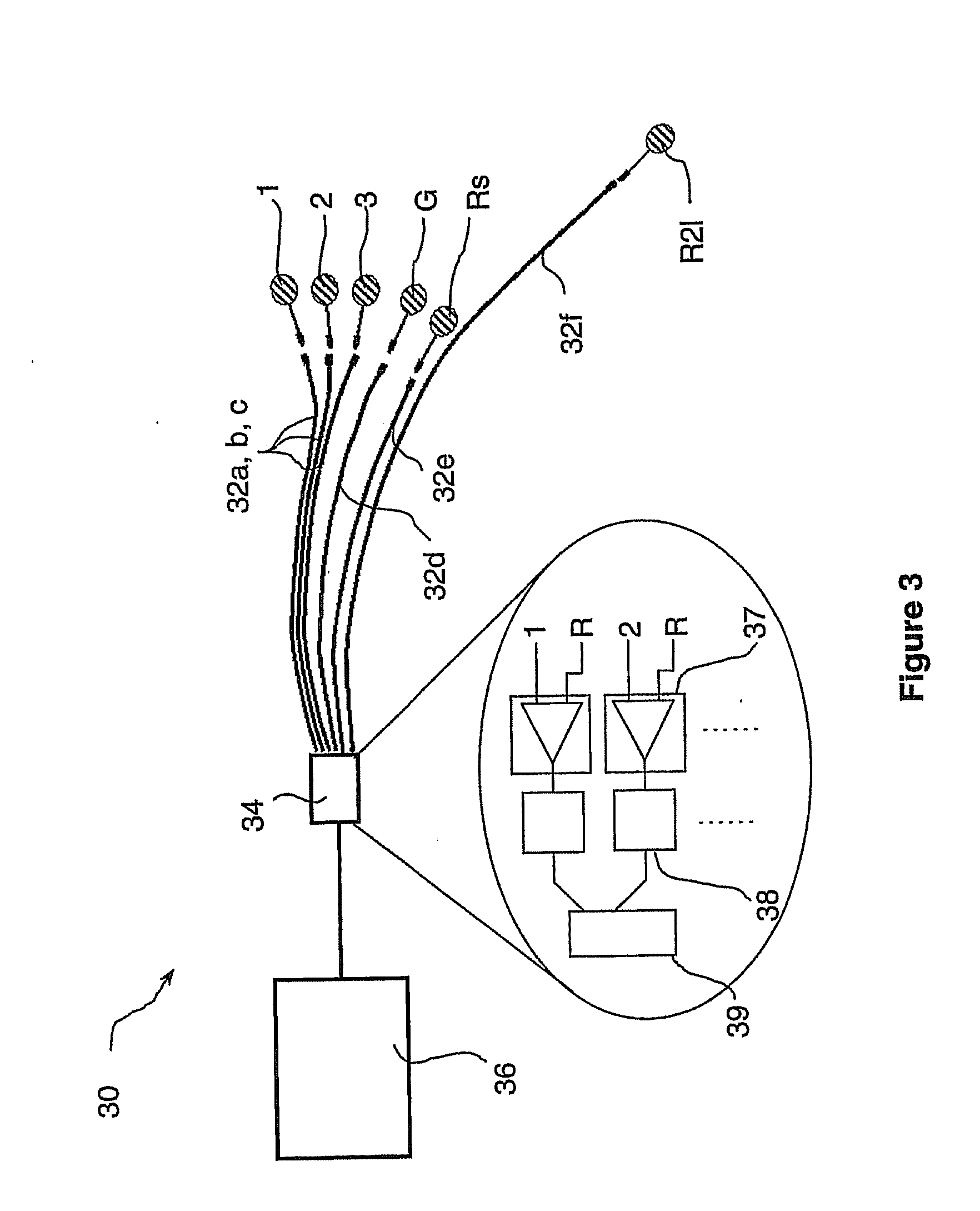Apparatus for Monitoring Fetal Heart-Beat
a technology of fetal heart-beat and apparatus, which is applied in the field of medical electrocardiographs, can solve the problems of degree of relaxation, almost impossible to judge, and inability to achieve, and achieve the effects of facilitating unipolar readings, facilitating routine use, and being more versatil
- Summary
- Abstract
- Description
- Claims
- Application Information
AI Technical Summary
Benefits of technology
Problems solved by technology
Method used
Image
Examples
embodiment 44
[0102]Considering FIG. 5a first, this embodiment 44, as with the earlier prototype 30, comprises a number of electrodes (G, Rs, Rl, 1, 2, 3, . . . ) suitable for attaching to the mother's skin and monitoring voltages signals generated thereon. In this embodiment however, each electrode (G, Rs, Rl, 1, 2, 3, . . . ) is connected first to its own pre-amplifier 46 (illustrated schematically inset 47) and from there, via respective screened leads (32a, b, c, d, . . . ), to the lead box 34. The detail of electronics suitable for pre-amplification will be apparent to one skilled in the art. As before, the lead box 34 contains the differential amplifiers 37 and low-pass filters 38 for each electrode channel and the multi-channel A / D converter 39. The computer 36 performs data processing on the digitised output from the lead box 34.
[0103]In the FIG. 3 embodiment 30, the lead box 34 houses the electronics responsible for performing all processing functions for the different input channels (vi...
embodiment 30
[0107]Referring once again to the embodiment 30 shown in FIG. 3, the computer 36 receives, from the lead box 34, digital data relating to the traces 52a, b, c . . . l for signal processing. In this embodiment of the invention the digitised signals are filtered (this time in software) in order to remove further unwanted frequency components. The filters used consist of a high-pass infinite impulse-response (IIR) filter of 6 filter taps, and a low-pass finite impulse-response (FIR) filter of 9 filter taps. The high-pass filter is designed using an IIR Butterworth filter with a passband of 2 Hz, stop-band of 0.1 Hz and stop-band attenuation of 120 dB, resulting in a 3 dB point of 1 Hz and a passband ripple of 0.01 dB. The low-pass filter is designed using a Blackman window with a band-edge at 150 Hz. Filtering is implemented using a zero phase forward and reverse digital filtering technique. This band-pass filtering reduces baseline wander to acceptable levels and also removes high fre...
PUM
 Login to View More
Login to View More Abstract
Description
Claims
Application Information
 Login to View More
Login to View More - R&D
- Intellectual Property
- Life Sciences
- Materials
- Tech Scout
- Unparalleled Data Quality
- Higher Quality Content
- 60% Fewer Hallucinations
Browse by: Latest US Patents, China's latest patents, Technical Efficacy Thesaurus, Application Domain, Technology Topic, Popular Technical Reports.
© 2025 PatSnap. All rights reserved.Legal|Privacy policy|Modern Slavery Act Transparency Statement|Sitemap|About US| Contact US: help@patsnap.com



